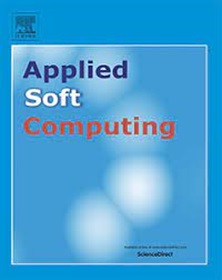人-无人机交互感知:基于骨架的迭代透视优化算法,用于无人机巡逻追踪大规模行人异常行为
IF 7.2
1区 计算机科学
Q1 COMPUTER SCIENCE, ARTIFICIAL INTELLIGENCE
引用次数: 0
摘要
本文提出了一种基于人体关键点特征的无人机巡视公共场所行人异常行为的系统框架,并设计了一种基于骨架的无人机大规模行人巡视视点优化与 PID 迭代学习控制算法。该系统框架通过无人机获取的图像和 OpenPose 的人体关键点识别,对行人异常行为进行预警。针对无人机巡逻过程中获取图像的可识别性问题,提出了一种受迭代学习控制启发的算法,用于利用人体躯干和肩部骨架信息跟踪大型人群,并设计了一种 PID 迭代学习控制算法,以提高行人运动具有近似重复性情况下的控制效果。该算法能够增加被拍摄行人的数量,并延长对其行为的持续观察时间。最后,实验结果验证了算法的可用性和有效性。所提出的方法将有助于体现智能中交互感知技术的研究。本文章由计算机程序翻译,如有差异,请以英文原文为准。
Human-UAV interactive perception: Skeleton-based iterative perspective optimization algorithm for UAV patrol tracking of large-scale pedestrian abnormal behavior
This paper presents a system framework for UAV patrolling pedestrian abnormal behavior in public places based on human key point features and a skeleton based UAV large-scale pedestrian patrol viewpoint optimal with PID-iterative learning control algorithm is designed. The system framework provides early warning of abnormal pedestrian behavior through images obtained by UAV and human key point recognition by OpenPose. Aiming at the problem of recognizability of images acquired during UAV patrol, an algorithm inspired by iterative learning control for tracking large crowds with human torso and shoulder skeleton information is proposed and a PID-iterative learning control algorithm is designed to improve the control effect under the situation that pedestrian motion has an approximate repeatability. The algorithm is able to enhance the number of photographed pedestrians and increase the sustained observation time of their behaviors. Finally, the usability and effectiveness of the algorithm are verified by experiment results. The proposed method will contribute to the research of interactive perception technology in embodied intelligence.
求助全文
通过发布文献求助,成功后即可免费获取论文全文。
去求助
来源期刊

Applied Soft Computing
工程技术-计算机:跨学科应用
CiteScore
15.80
自引率
6.90%
发文量
874
审稿时长
10.9 months
期刊介绍:
Applied Soft Computing is an international journal promoting an integrated view of soft computing to solve real life problems.The focus is to publish the highest quality research in application and convergence of the areas of Fuzzy Logic, Neural Networks, Evolutionary Computing, Rough Sets and other similar techniques to address real world complexities.
Applied Soft Computing is a rolling publication: articles are published as soon as the editor-in-chief has accepted them. Therefore, the web site will continuously be updated with new articles and the publication time will be short.
 求助内容:
求助内容: 应助结果提醒方式:
应助结果提醒方式:


